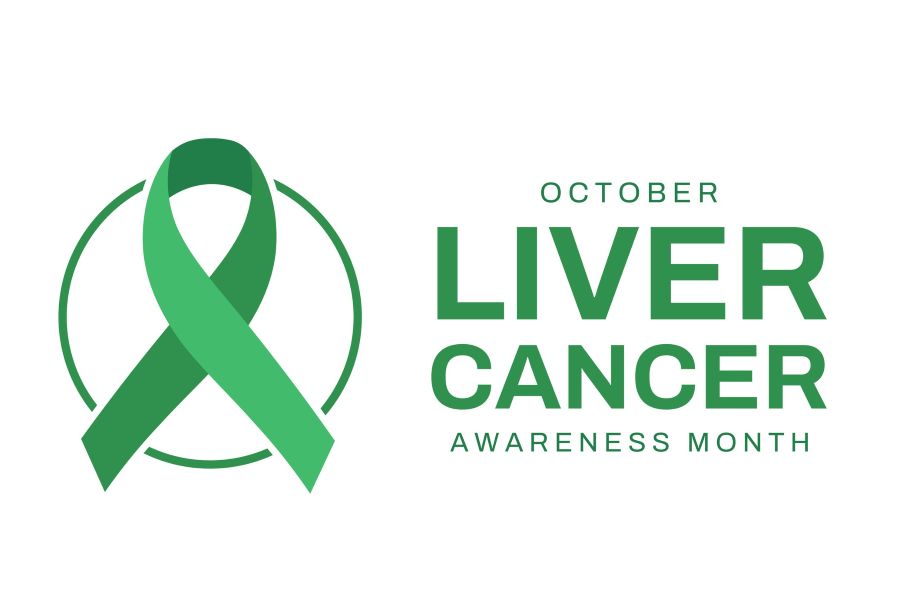
Hepatocellular carcinoma (HCC) is a primary liver cancer with approximately 25,000 cases diagnosed annually in the United States. The incidence of HCC has been increasing in the U.S. by nearly 50% since 2000.1 Over 90% of all HCC cases can be attributed to one of four specific causes: chronic hepatitis C infection, chronic hepatitis B infection, alcohol-related liver disease or nonalcoholic fatty liver disease.2 Overall survival for all patients with HCC is unfortunately low — 14% at five years. However, when stratified by stage, early stage 1 disease has a 51% 5-year survival rate, while stage 2 disease has a 12% 5-year survival rate and stage 3 disease has a much lower 6% 5-year survival rate. Fortunately, 58% present at an early stage, 12% present at stage 2 and the remaining present at stage 3 or later.3
General approach to management of localized disease
Hepatocellular carcinoma that is localized, or limited to one section of the liver, is treated mainly with one of three modalities: a) surgical resection, b) liver-directed locoregional therapies and c) liver transplant. The decision on which modality to use is a multidisciplinary discussion that is best had in a multidisciplinary liver tumor board conference. However, factors that apply to decision-making are described below.
Surgical resection
Surgical resection is considered the preferred modality for localized HCC if the patient meets eligibility criteria. To tolerate a liver resection, patients need to have the mildest form of liver disease (Child-Pugh A) without any hypertension of the portal venous system. Additionally, the extent of resection should leave a minimum of 40% of the remaining liver volume. Patients should not have more than two or three lesions, and all lesions should be limited to one side of the liver (left or right).
Locoregional therapies
If a patient is not a candidate for surgical resection, so-called “liver-directed therapy” can be used. “Liver-directed therapy” is an umbrella term describing multiple modalities, including percutaneous thermal ablation of the tumor and intra-arterially delivered embolic beads.
Percutaneous thermal ablation, also called radio frequency ablation (RFA) or microwave ablation, uses image guidance to place a long metal probe through the skin and into the center of the tumor. The tip of the probe is heated to a very high temperature, which destroys the tumor.
Artery-delivered beads are very small — smaller than grains of sand — and are designed to block the blood supply to the tumor when delivered to the specific artery (or arteries) feeding the tumor. These beads can be loaded with chemotherapy (TACE), loaded with radioactive isotope (Y90) or they may have no secondary agent (bland). The decision on which liver-directed therapy to use is technical, with multiple considerations, and consultation with interventional radiology specialists who deliver these therapies is essential.
Lastly, external beam radiation can be used as a locoregional modality to treat HCC not eligible for the above therapies.
Liver transplant
Some patients are best served by liver transplant, typically those with the most severe background liver cirrhosis (high MELD scores) and smaller HCC tumors. Several criteria classify which sizes and extents of tumors are eligible for transplant, including the Milan Criteria, and the extended UCSF criteria. Patients who appear eligible should be referred to a transplant center for evaluation. Transplant and referring centers work together to determine optimal therapy. In some cases, liver-directed therapy can be used as a “bridge” to stabilize disease while the patient waits on the transplant list.
Adjuvant postoperative treatment
While surgical resection remains one of the mainstays of curative treatment for HCC, the recurrence rate is more than 50% after resection. HCC remains one of the few cancers without standard adjuvant treatment after resection. Early recurrence within the first two years after resection occurs in patients with high-risk features, including large tumor size (>5 centimeters), multiple tumors, portal vein thrombosis and tumors with vascular invasion.
Adjuvant antiviral therapy for patients with active hepatitis B and C-related HCC and high viral load has been shown to improve outcomes after resection. However, multiple other therapies, including sorafenib, have not consistently shown overall survival benefit in the adjuvant setting. Trans arterial embolization therapy has shown benefit after resection in a meta-analysis, especially in carefully selected patients, though it is not routinely recommended in all patients since more studies are needed.
IMbrave-050, a recent phase 3 RCT, included nearly 700 patients with C-P Class A HCC randomized to receive atezolizumab and bevacizumab every three weeks for 12 months versus active surveillance after resection. It showed significant DFS benefit in the initial analysis, but recent updated analysis failed to maintain the DFS benefit at 36 months. While overall survival data is not mature yet, it is not considered standard of care at this point for adjuvant therapy.4,5
Systemic therapy
Systemic therapy is recommended for patients with unresectable or metastatic disease and for patients who are not candidates for resection, given other medical problems or poor performance status.
Unlike in the adjuvant setting, bevacizumab-atezolizumab combination significantly improved DFS and overall survival compared to sorafenib in patients with locally advanced or unresectable HCC (C-P class A) as shown in IMbrave150 study. The overall survival and progression-free survival were 19.2 months and 6.9 months in the bevacizumab-atezolizumab arm compared to 13.4 vs 4.3 months in the sorafenib arm.4,5
Similarly, the combination of durvalumab and anti-CTLA-4 antibody tremelimumab in the HIMALAYA study showed improved overall survival compared to single-agent sorafenib. An updated 48-month survival is 25% for the combination versus 15% for the sorafenib arm.6
Other first line listed therapies include single-agent durvalumab, sorafenib, lenvatinib, nivolumab and pembrolizumab. Nivolumab plus ipilimumab can be used in tumors with high tumor mutational burden (TMB). Second- and subsequent-line therapies are chosen based on prior treatments, as there are no comparative studies to determine the optimal second-line therapy. Molecular profiling for PDL1, RET, NTRK and TMB can guide therapy after first-line treatment. It is also important to consider performance status, other medical problems (including underlying autoimmune conditions) and tolerance of previous therapies prior to deciding on subsequent treatment.
Conclusion
Hepatocellular carcinoma is a rare cancer. It is important to consult a surgical oncologist early to help with both decision-making and coordination of future surgical management. Treatment strategies in these cases are always multidisciplinary, involving the surgical oncologist, interventional radiologist, medical oncologist and liver transplant hepatologist. When found early and treated aggressively, outcomes from hepatocellular carcinoma can be favorable.7
Learn more about treatment for liver cancer at Northside Hospital Cancer Institute.
References:
- Centers for Disease Control and Prevention, “NPCR Public Use Data,” accessed September 17, 2025, https://www.cdc.gov/cancer/npcr/public-use.
- N.E. Rich, C. Hester, M. Odewole, et al., “Racial and Ethnic Differences in Presentation and Outcomes of Hepatocellular Carcinoma,” Clinical Gastroenterology and Hepatology 17 (2019): 551–559.e551.
- M. Yilma, R. Houhong Xu, V. Saxena, et al., “Survival Outcomes Among Patients With Hepatocellular Carcinoma in a Large Integrated US Health System,” JAMA Network Open 7, no. 9 (2024): e2435066, https://doi.org/10.1001/jamanetworkopen.2024.35066.
- IMbrave050 Study Group, “Updated Efficacy and Safety Data From IMbrave050: Phase III Study of Adjuvant Atezolizumab Plus Bevacizumab Versus Active Surveillance in Patients With Resected or Ablated High-Risk Hepatocellular Carcinoma,” Abstract LBA39, 2024.
- R.S. Finn, et al., “Updated Efficacy and Safety Data From IMbrave150: Atezolizumab Plus Bevacizumab Versus Sorafenib for Unresectable Hepatocellular Carcinoma,” Journal of Hepatology 76, no. 4 (2022): 862–873, https://doi.org/10.1016/j.jhep.2021.11.030.
- T. Yau, et al., “Four-Year Overall Survival Update From the Phase III HIMALAYA Study of Tremelimumab Plus Durvalumab in Unresectable Hepatocellular Carcinoma,” Annals of Oncology 35, no. 5 (2024): 448–457, https://doi.org/10.1016/j.annonc.2024.02.005.
- National Comprehensive Cancer Network (NCCN), NCCN Guidelines for Hepatocellular Carcinoma, 2025, accessed September 17, 2025, https://www.nccn.org.


